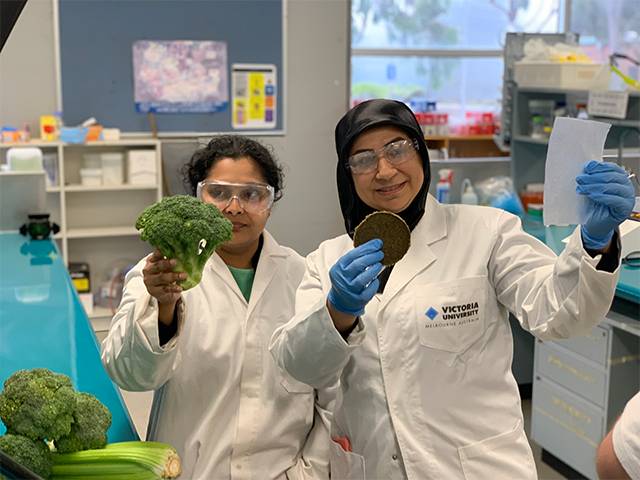Veggie waste offers green solution to single-use packaging

|
VEGGIE WASTE OFFERS GREEN SOLUTION TO SINGLE-USE PACKAGING |
|
Australia's mounting packaging stockpile could soon shrink with a little help from greener packaging made from vegetable waste. |
| With an Australian Government target for all packaging to be reusable, recyclable or compostable by 2025, Victoria University researchers have been looking at how agricultural waste from vegetables such as zucchini, broccoli, celery and lettuce could be used to create affordable and easily compostable packaging. Known as 'biopackaging,' the global environment-friendly food packaging market is expected to reach about $184 billion by 2026, according to Modor Intelligence as increasing bans on plastic and growing consumer awareness affect markets worldwide. As a solution, polymer expert Dr Marlene Cran and her team have been working in the research labs at VU's Werribee Campus with the unusable produce provided by a nearby Werribee South market-farm. Leaves, stems and rejected produce is normally used as animal feed, composted, or can be sent to landfill where it decomposes and produces methane gas. Instead, the team has created a range of food packaging products using the waste vegetables. VU Sustainable Packaging reseachers found celery's high cellulose content makes ideal food trays, whereas zucchini, broccoli and lettuce can be processed into thick films that could be suitable as a tray insert or produce separator. Mycelium – the root structure of mushrooms – can be grown on the partially dried waste materials to make good replacement for styrofoam boxes. The team's goal is to use minimal interventions such as intensive drying or the use of excessive additives so that the processes are as natural and inexpensive as possible, and easier to scale-up in the future. Pea starch has starring role in film-making Away from the farm, the team is using starch waste material left over from the extraction of proteins from yellow peas to create a flexible film that could become the new plastic in a true circular economy. "In future there could be protein powders or dried peas sold in a bag made from the leftover starch sourced from the vegetables… inside the bag," said Dr Cran. "That's the dream." Despite the lack of industry-grade testing facilities and the expense to test alternative packaging – meaning a possible long road ahead – Dr Cran says it just makes sense to replace throw-away packaging with sustainable natural products. "Designing something that can compete on price and effectiveness with plastic and foam is the work of decades. But the investment needs to start now." VU's sustainable packaging solutions project is funded by the Victorian government's higher education state investment fund. [Attached photo features Victoria University sustainable packaging researchers Ghowsalya Mahendrarajah (L) and Ghofran al-Nasiri (R) with sustainable packaging products made from vegetable waste.] |
MORE





